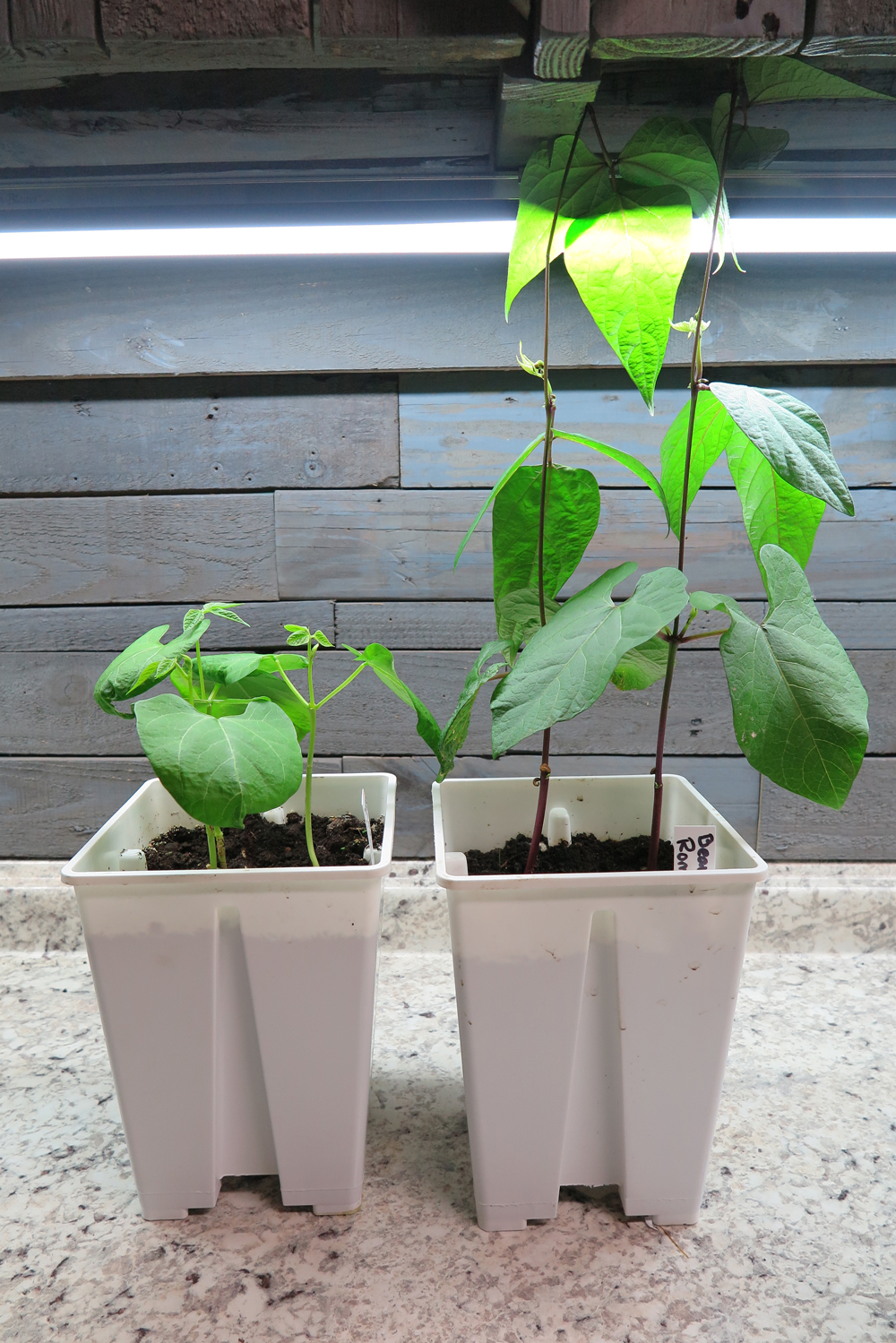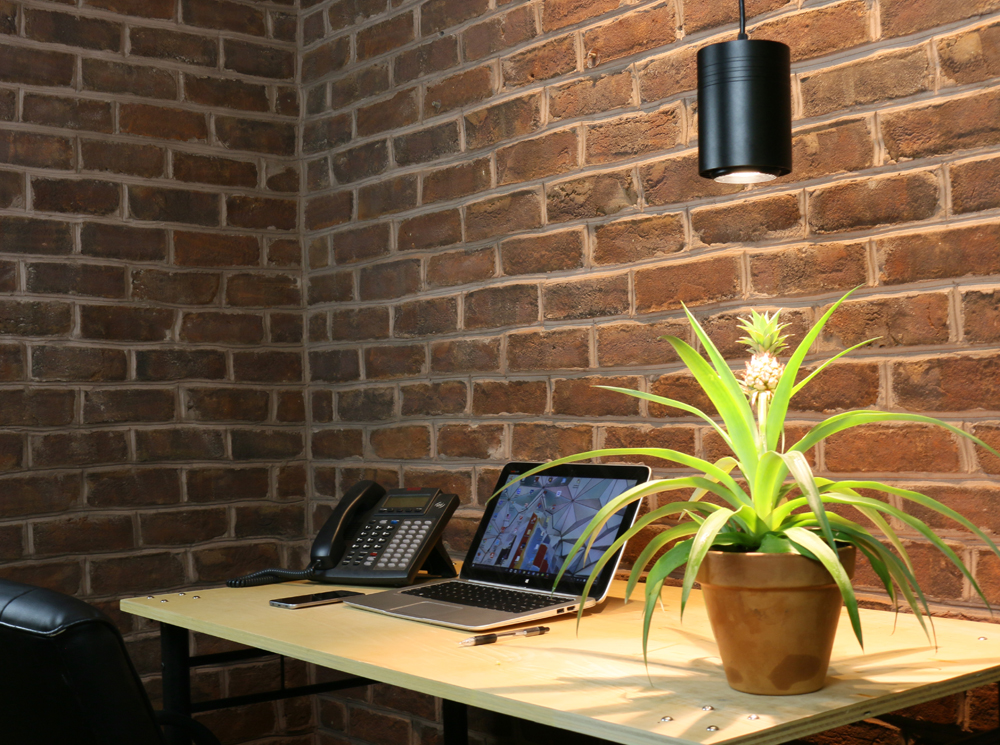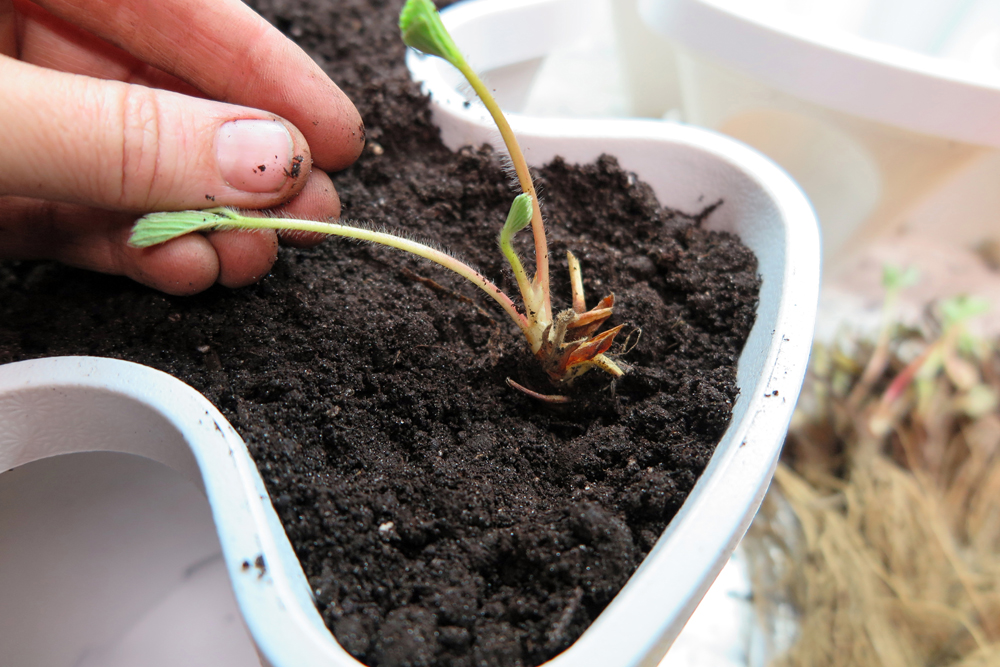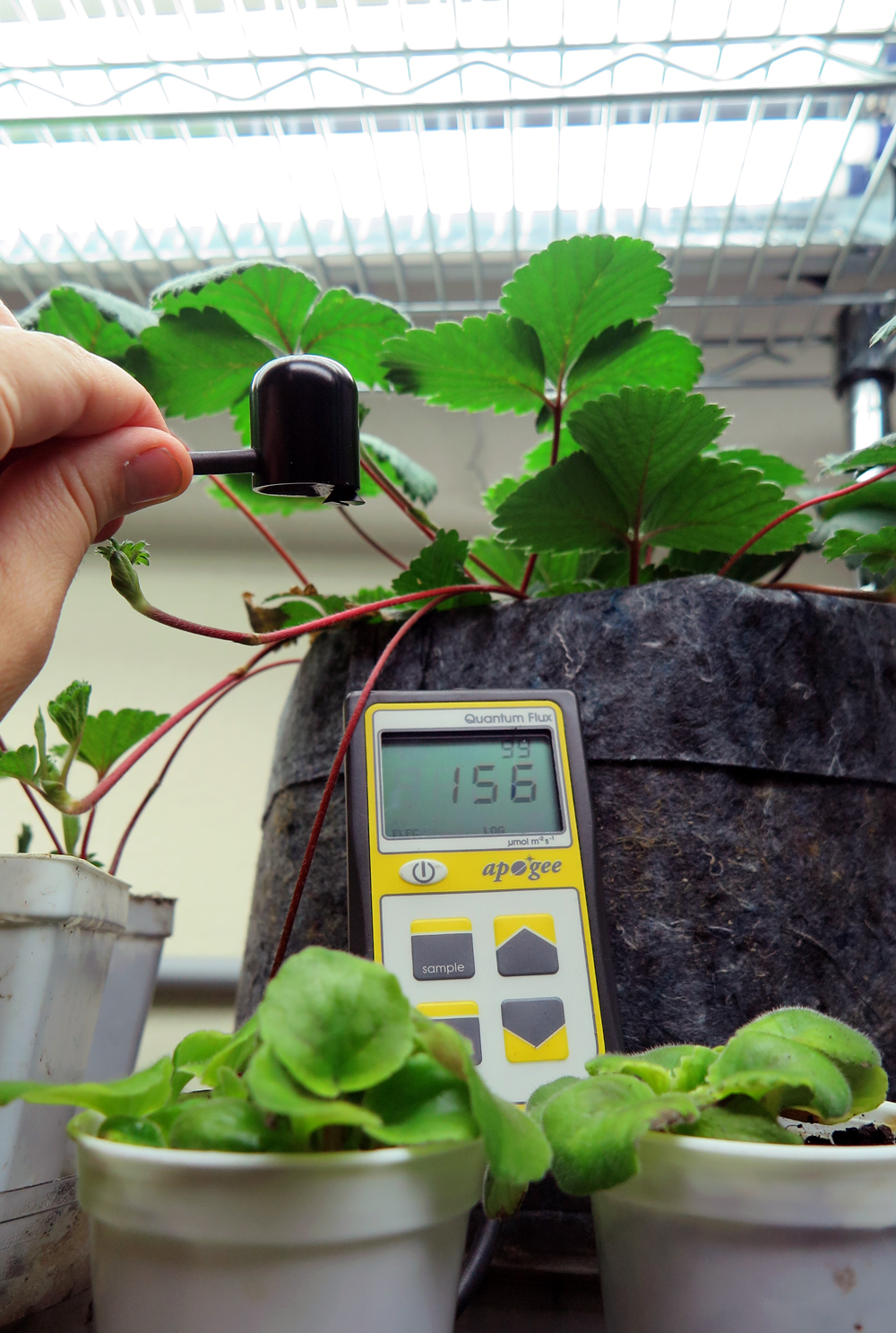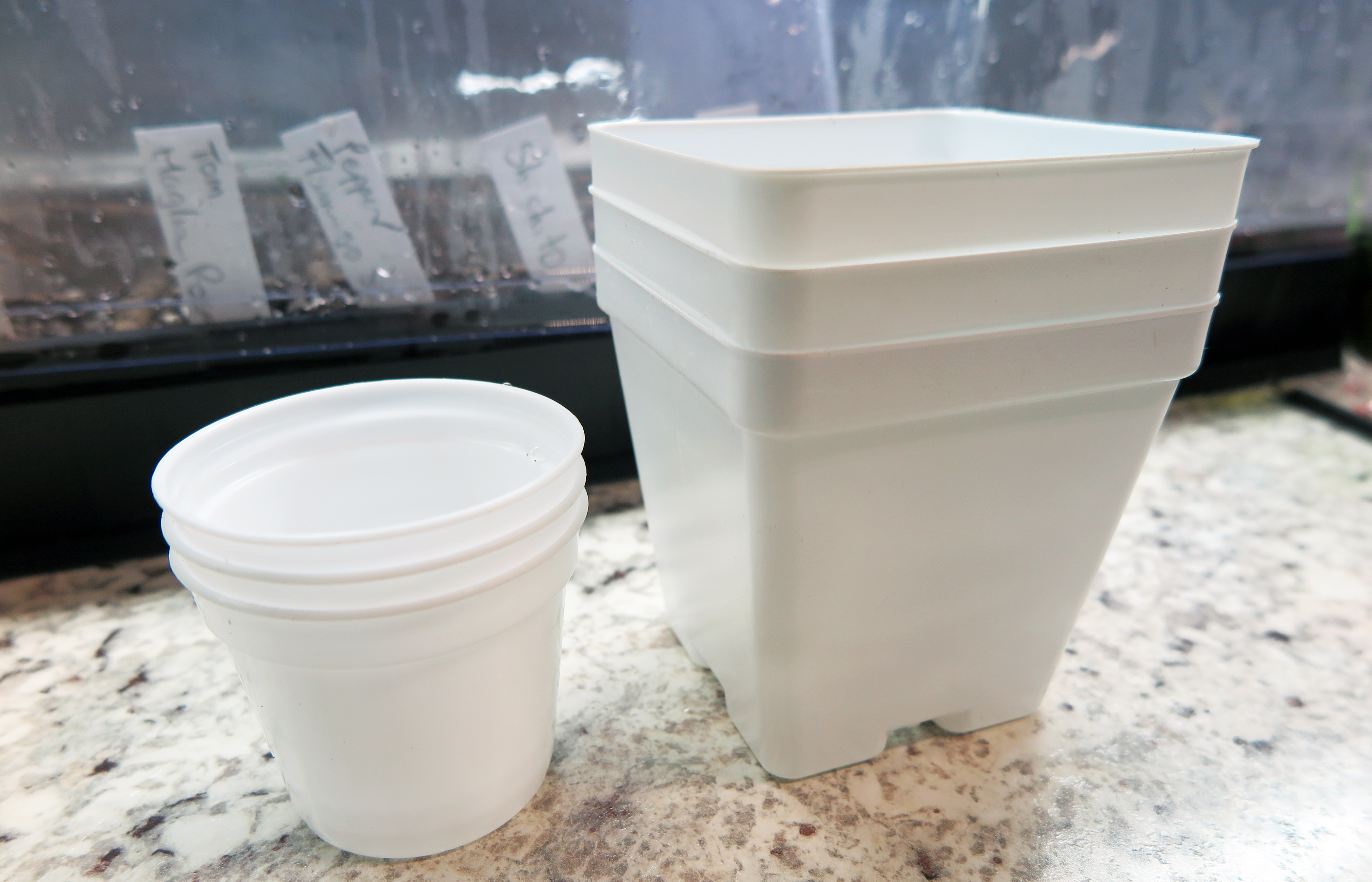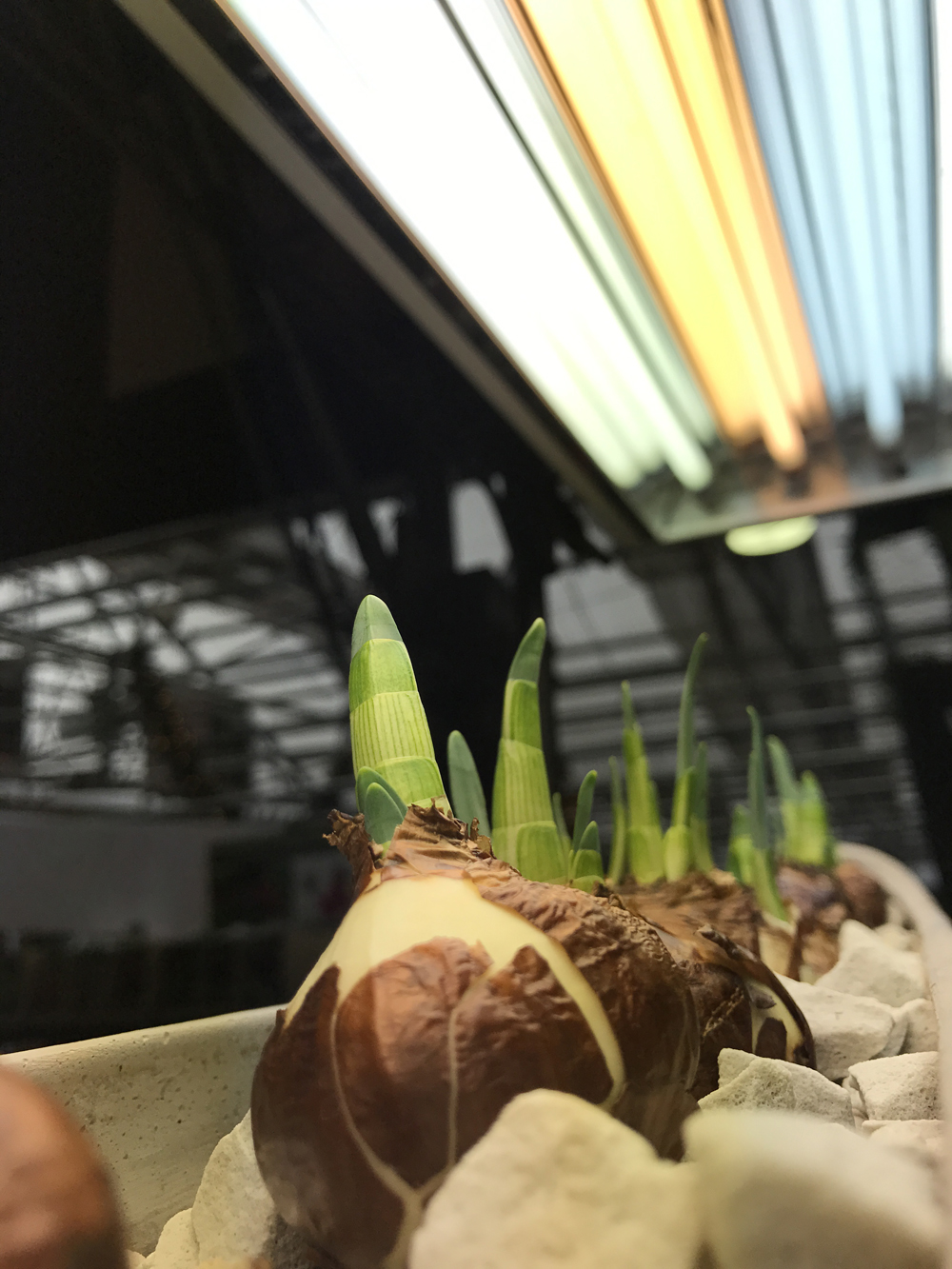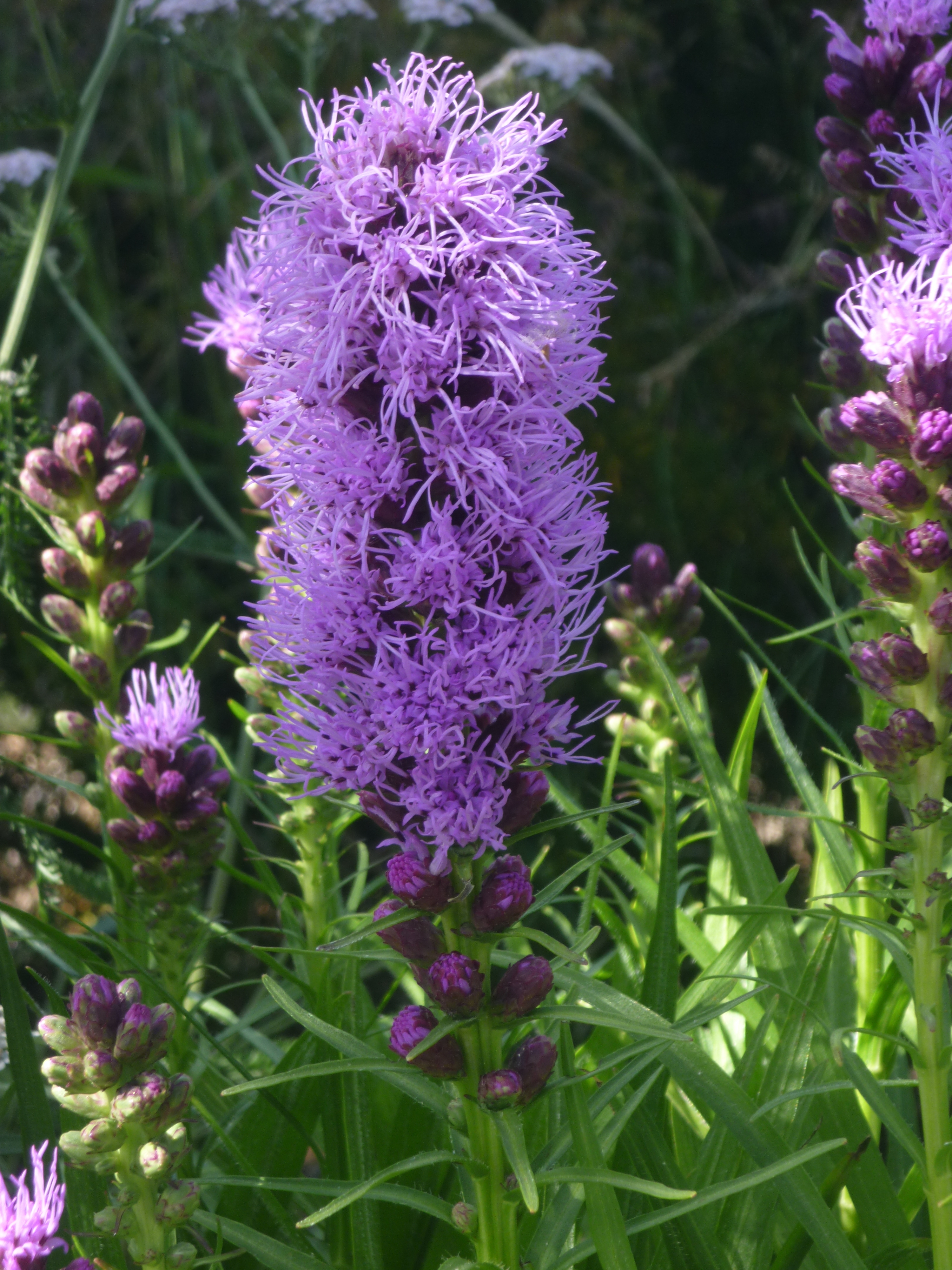Taking a Begonia Leaf Cutting
October 1, 2018
Plants have varying requirements for how, where, and when to take cuttings, the ideal size of the cuttings, and how long they may take to root. Some plants, such as succulents, will root from the base of a leaf.
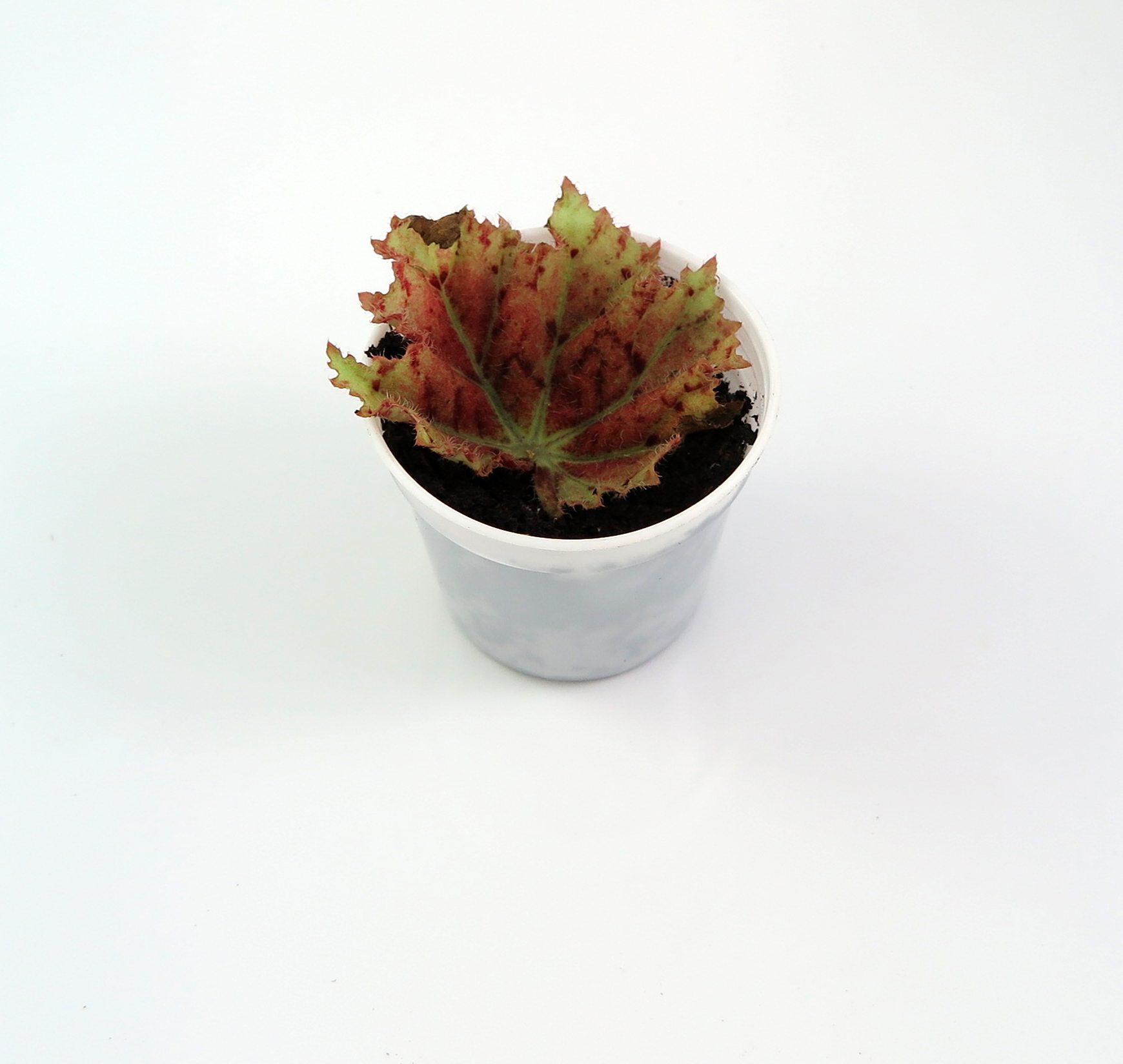
A begonia leaf cutting sits flat on the soil surface.
PC: Leslie F. Halleck
Others, such as begonias and African violets, will root straight from the leaf surface. This practice is called taking a split-leaf cutting.

